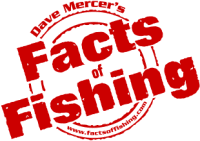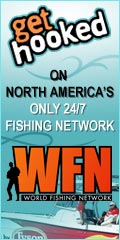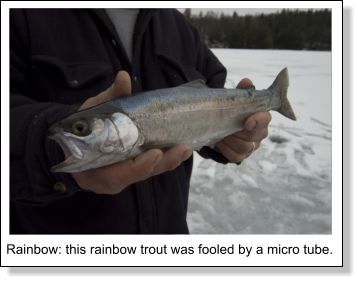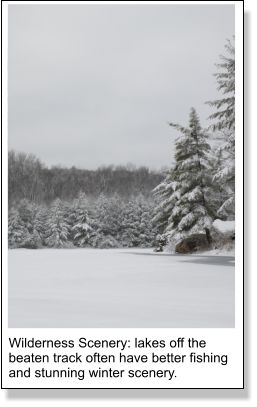


Editors & Publishers
T.J. & Monique Quesnel
The
Ontario Fishing Network
E-Magazine is
published 12 times a year on or near the beginning of every month. Our
magazine is geared to any angler who enjoys fishing of any type in the
wonderfully diverse province of Ontario.
Editorial Submissions: We welcome query letters,
but assume no responsibility for unsolicited materials.
Subscriptions: Subscriptions are FREE of charge
and delivered via email.
You can subscribe
HERE:
Privacy Policy: Unlike other publications We
NEVER make our subscribers list (your email address) available to any
other companies.
Advertising: If you are interested in advertising
please email us.
Circulation - 8,500 email subscribers
© 2009 Due North
Marketing / Ontario Fishing Network / T.J. Quesnel. All rights
reserved. Reproduction of any material without prior written
permission strictly prohibited.
|
 Icing
Rainbow Trout Icing
Rainbow Trout
By Tim Allard
Every year thousands of rainbow trout are stocked in many lakes.
Targeting these chrome-coloured fish makes for exciting ice angling.
These worthy adversaries will test your angling skills, demanding
finesse presentations at times and peeling line with bursts of speed
once hooked. Not to mention they're darn tasty on the dinner table.
Here’s where to find them and how to hook them this ice season.
Winter Activity
A cold-water fish, rainbows stay active and feed throughout
the winter, munching on a variety of food items from aquatic insects
to minnows. Dawn and dusk are peak fishing times on most inland
lakes. At mid day rainbows often cruise the shallows or suspend in
deep water. Feeding activity usually slows during this time but you
will still intercept cruising fish.
Winter Location
Shallow bays and shorelines mixed with any remaining
healthy weeds are prime areas at first ice. These locations hold a
menu of baitfish and aquatic insects. Rocky points and slow-tapering
flats are other productive zones. During mid-winter rainbows move
deeper, relating to sharp breaks and reefs. They also suspend off of
structures. At late ice, trout again relate to shallow water areas.
Rock structures on shorelines, steep rock walls, boulder piles, and
points are prime late season spots.
 Rainbow
Tackle Rainbow
Tackle
Rainbows have good eyesight and can be quite selective of
the lures they hit. Light line, finesse presentations and small
baits are important details when fishing clear waters.
Use medium to light action rods with sensitive tips for jigging. I
like a rod to be at least 26-inches or longer. Length equates to
leverage for battling feisty rainbows. A longer rod also absorbs
headshakes, reducing stress on the line. I use four-pound test line,
but drop to three- or two-pound test when fish are fickle.
Jigging Spoons
A standard lift-fall-hold jigging sequence works best with
spoons. The flash and vibrations call in aggressive rainbows,
imitating an injured minnow. Rainbows often hit spoons aggressively.
If you need to finesse them, jiggle the spoon with slight shakes of
the rod. Don’t get caught up trying to coax rainbows with spoons
though. If you can’t get them to hit a bait in less than 30 seconds,
they’ve likely moved on. Repeat your initial jigging sequence to
bring them back or attract others.
Sweeten spoons with bait. Live maggots are a dynamite tipping
option. Re-bait often so spoons stay smelly. Artificial baits are
effective and less hassle to keep. I tear artificial baits in half
when tipping small spoons. This ensures tipping doesn’t overshadow
the lure’s profile or ruin its action.
 Ice
Jigs Ice
Jigs
Ice jigs are my next favourite bait for rainbows as they
imitate nymphs and aquatic insects. I use them when spoons aren’t
producing or I need a finesse presentation, often during midwinter.
Always tip jigs with live maggots or artificial bait.
Extremely light jiggles of the rod cause a jig to kick, pivoting at
the hook eye. This triggering move is deadly when combined with a
slow arm raise and occasional pauses. The sequence imitates a
swimming creature and effectively works the entire water column.
Tiny Plastics
Small 1.5 to two-inch plastic jigs, like tubes or grubs,
are other productive baits for rainbows. One late-ice outing last
season, Berkley's Atomic Teasers in white were the top bait.
Rainbows seemed to favor the plastics’ larger profile. Work these
baits with a lift-fall-hold sequence while mixing in various hops
and quivers. Snapping the wrist and letting a jig freefall on slack
line also attracts trout.
Don't Discount Deadsticks
To better your odds at icing trout, be sure to set out
additional lines when legal. As trout are notorious cruisers,
sometimes it's better to set up several lines on a prime area and
wait for them to travel ino your baits. The two best producers I've
used over the years have been small 0.25- to 0.5-inch worm pieces on
a small bait or octopus hook below a small split shot. This offering
is a rough replication of many of the aquatic morsels trout feed on,
like nympths. The other deadly set line offering is a three inch
minnow rigged on a similar hook and weight set up. Although trout
eat plenty of invertebrates big ones are often inclined to hit
baitfish when available. Stagger set lines at different depths is
good practice as rainbows will cruise throughout the water column.
Invest the time to fish rainbows this winter. The best action is
likely to be on remote lakes. Getting to them is worth the extra
effort, especially when you catch a few fish amidst stunning winter
wilderness scenery.
Photos by Tim Allard
|